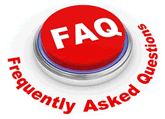Why have No Mow Zones
Many of you are wondering how Board arrived at the Rosedale Pond Policy and the buffer or "No Mow" strip around ponds and the reasoning behind it. Here is some information provided by the Stormwater Management Committee, previously shared with the community by email late last summer, that can help you understand the issues.
Buffer zones (sometimes called no mow zones) prevent erosion, which can cost communities hundreds of thousands of dollars to fix. They extend the life the pond, delaying and possibly putting off the need for expensive engineered solutions.
The University of Floridaa IFS Extention has created an excellent video presentation explaining the issues that can be seen by clicking on the following link: https://www.youtube.com/watch?v=ZlJ3-JJgBKk.
They following article taken from the University of Florida IFAS Extension Website also provides some background on subject.
What is a Healthy Pond?
A healthy pond has five main features.
Features of a healthy pond:
-
Florida native plants in and around the pond, covering 30-85% of the total pond area.
Note: This statements does not refer to the entire pond but to the coverage in the littoral shelf area of the pond, which would equate to total coverage of Rosedale's ponds of 15-20%. In fact, no vegetation will grow beyond this area in our ponds as they are too deep. -
Diverse plants and animals supporting a balanced aquatic ecosystem.
-
A 3-to-10-foot-wide buffer zone with plants growing their maximum height and turfgrass trimmed to maintain 8 – 12 inches in height.
-
Periphyton allowed to grow.
-
Limited stressors from surrounding roadways and yards.
The first is an abundance of native flora in and around the pond, covering between 30% and 85% of the pond area. This is necessary to help support a balanced ecosystem of fish, invertebrates, birds, and more. Second, when selecting plants for your pond, it is important to have a variety of species to encourage biodiversity. Biodiversity creates resilience in the face of disease and other natural hazards and ensures shoreline stability.
Another feature of healthy stormwater ponds is a buffer zone that is greater than 3-feet-wide. Buffer zones prevent erosion, which can cost communities hundreds of thousands of dollars to fix. Thus, buffer zones (sometimes called no mow zones) extend the life the pond, delaying and possibly putting off the need for expensive engineered solutions. In addition to saving money, buffer zones also reduce pollutants coming from adjacent yards and provide habitat for Florida wildlife. Not all buffer zones are created equal. That is why we have created a buffer zone fact sheet to communicate the pros and cons of 3 different buffer zones.
It is important that the pond managers and residence recognize the importance of periphyton and other beneficial algae. Contrary to the common narrative that "a clear pond is a healthy pond," in our region of the state where nutrients are naturally abundant, the presence of algae, bacteria, and detritus in ponds is an integral part of a healthy ecosystem. These smaller organisms are the base of the food chain and provide necessary nutrition to invertebrates, fish, and birds.
Last, it is important that you minimize the negative inputs coming into your pond from neighborhood yards and streets. These stressors, which include nutrients from landscape debris, fertilizer, and/or pet waste, can create an imbalanced pond and subsequent decline in the health of your pond and all the plants and animals that rely on it.


